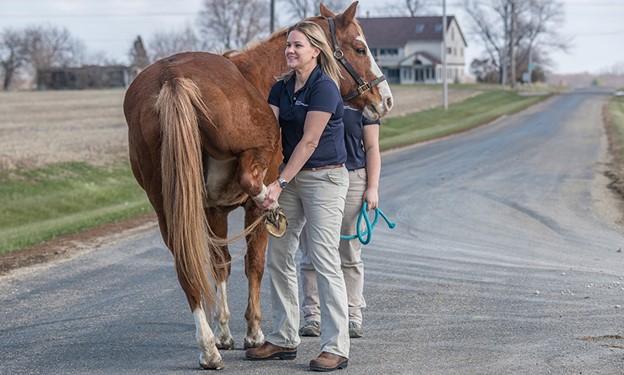
Stem Cell Therapy for Sport Horses
Learn more about stem cell therapy and how veterinarians use it to help rehabilitate injured horses.
How to care for the basic health needs of horses

Learn more about stem cell therapy and how veterinarians use it to help rehabilitate injured horses.

Any horse can benefit from rehabilitation during their lifetime.

Taking these steps can help rid your barn of the strangles-causing pathogen.

Conventional and easy-to-use joint therapies such as corticosteroids and hyaluronic acid continue to have their place in equine practice.

If you are experiencing a hay shortage, consider these options for hay replacement.

A 13-year study showed this PPID treatment improves horses’ clinical signs and quality of life over prolonged periods.

Find out if your mare’s frustrating antics are due to estrus, and learn about ways to keep them in check.

Wildlife can spread rabies and equine protozoal myeloencephalitis (EPM) to horses, so secure your barn against unwanted visitors.

Ensure your decision to breed is the right one and that you’re prepared to handle the costs and commitments involved.

Veterinarians might consider addressing axial skeleton adaptations when rehabbing horses with limb injuries.

The best winter weight management practice could be consistent monitoring of your horse’s body condition.

If you are thinking about switching up your horse’s brand of feed, consider these factors first.

Learn how to keep your barn and other buildings safe during winter cold and snow.

Use SMART supplementation strategies and the ACCLAIM system to find a quality product.

Sometimes we get our horses in trouble with the very items we use to help them be more comfortable.

Researchers found a strong association between hind hoof balance and posture that could affect overall musculoskeletal health.
Stay on top of the most recent Horse Health news with
"*" indicates required fields